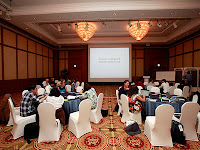

There are different communication planning templates. What counts is not the plan but the planning. The templates are only a means to discipline our strategic thinking and avoid assumptions. We have to understand that planning is a circular process. After some stepts we may come to the conclusion that we are stuck and have to go back and redefine previous steps. Just filling in the boxes as we were made to do in an academic workshop may help our analytical thinking, but it does not result in a strategic plan. This became clear when we reached messages. We were instructed to think of making a power point presentation for a lecture. This had nothing to do anymore with the earlier formulated objectives (knowledge attitudes, behaviour) or issue e.g. change behaviour of fishermen. Too easily formulating the issue (like not defining the behaviour of fishermen and its context) is often the reason why one gets stuck in the planning cycle: make the problem small and concrete is the solution.












